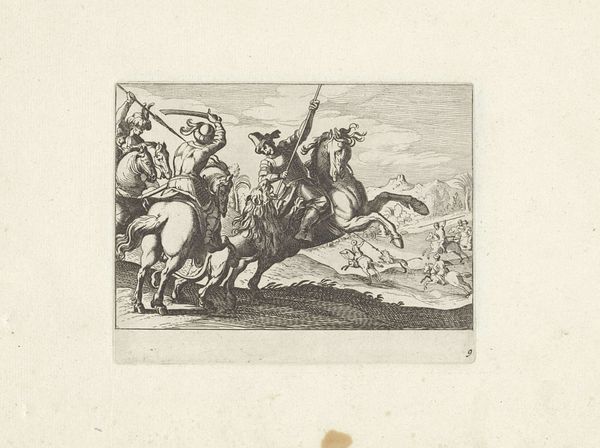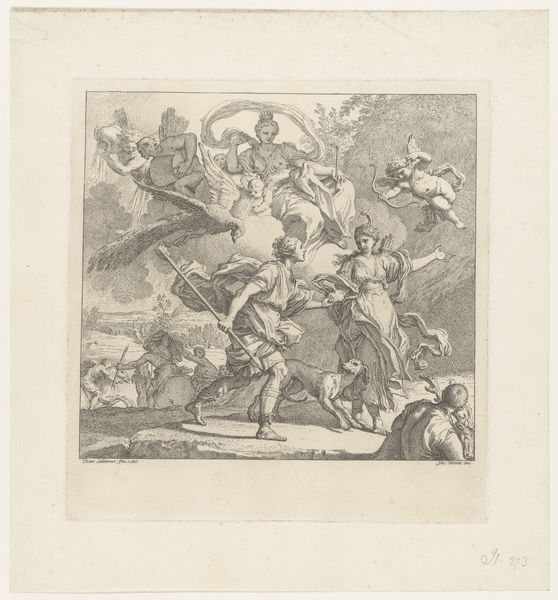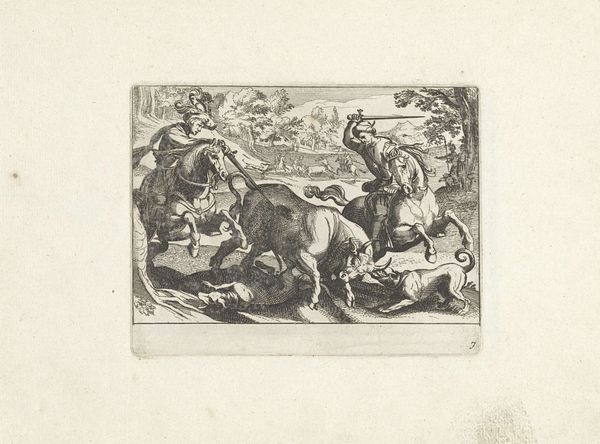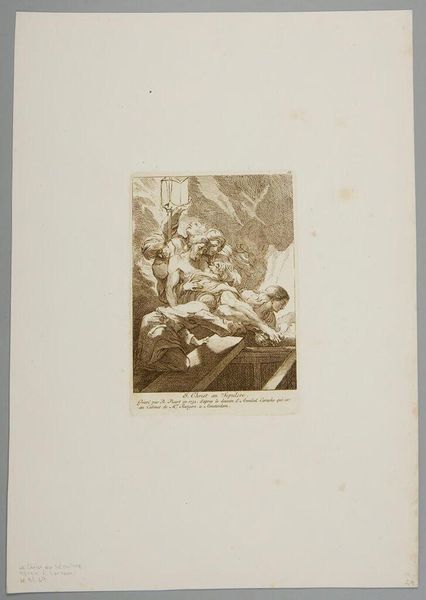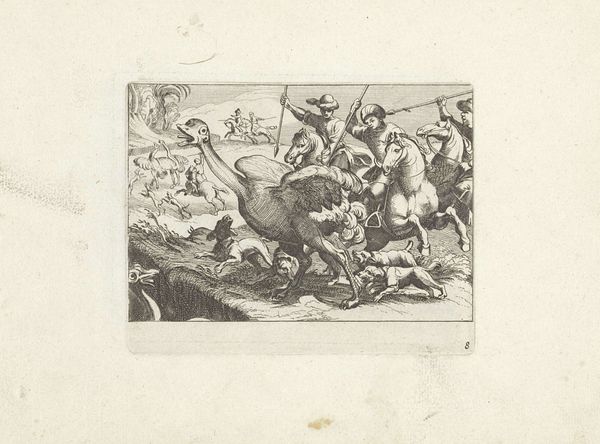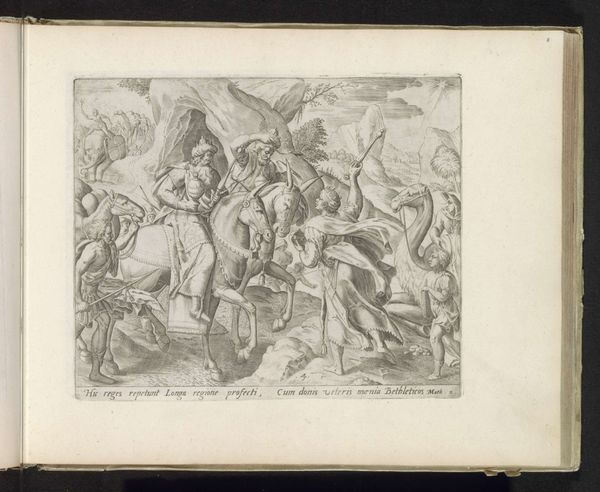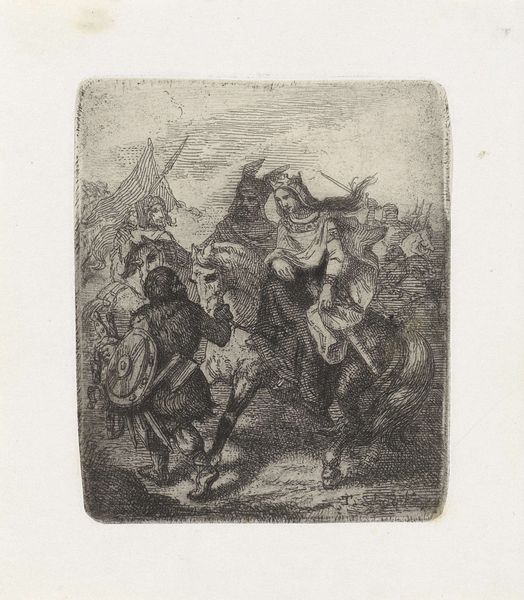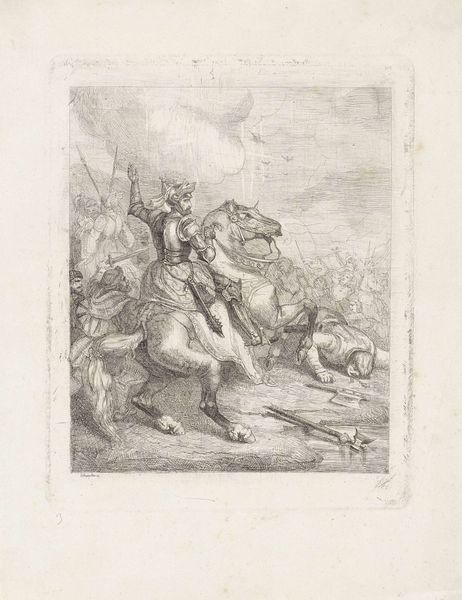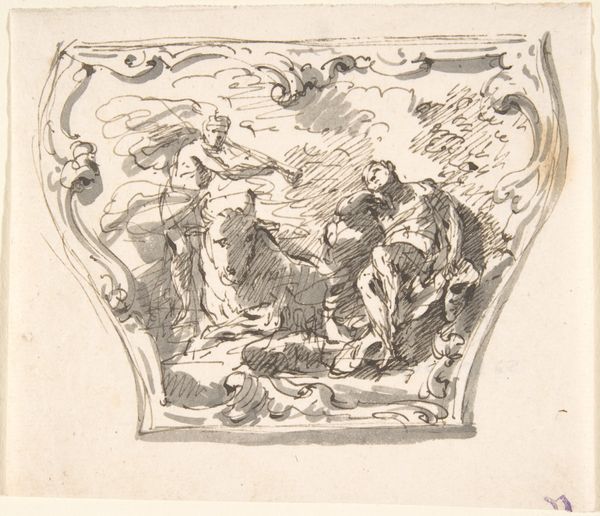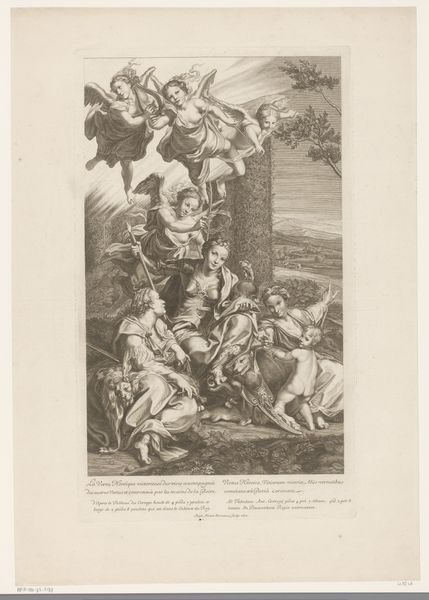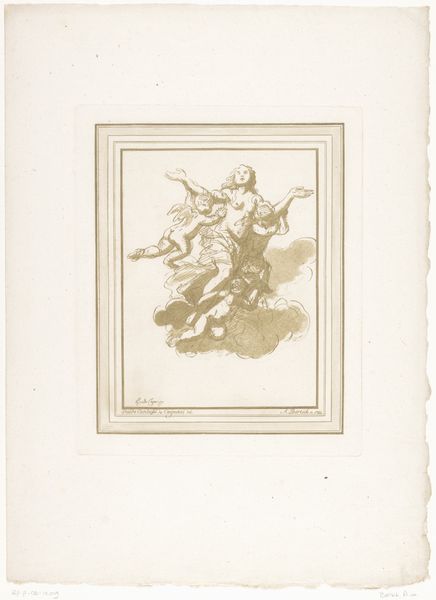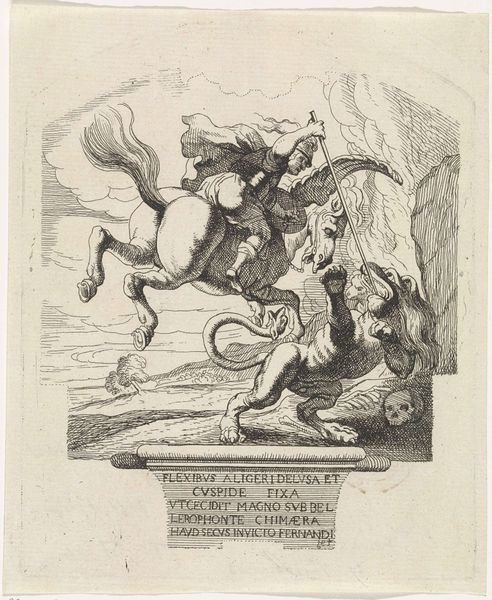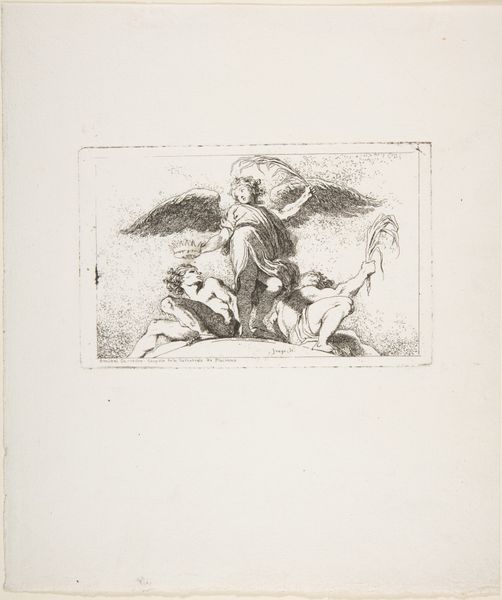
Bellerophon doodt de Chimaera; intocht van Ferdinand te Antwerpen in 1635 (nr. 40) 1639 - 1641
0:00
0:00
print, engraving
#
allegory
#
narrative-art
#
baroque
# print
#
old engraving style
#
figuration
#
history-painting
#
engraving
Dimensions: height 309 mm, width 261 mm
Copyright: Rijks Museum: Open Domain
Editor: This engraving, "Bellerophon slaying the Chimera," made by Theodoor van Thulden between 1639 and 1641, feels like a powerful, yet slightly unsettling depiction of mythological triumph. What do you see in this piece? Curator: Beyond the immediate visual of Bellerophon's victory, I see a layered allegory deeply embedded in the political landscape of its time. Consider the historical context: this was created to commemorate Ferdinand's entry into Antwerp. Doesn’t it strike you that the Chimera, with its composite nature, might represent the fractured political and religious tensions of Europe, embodied in a single monstrous form? Editor: So, Bellerophon, then, embodies Ferdinand and his triumph symbolizes not just military strength but a restoration of order, right? The smoke behind the Chimera makes the engraving feel somewhat ominous. Curator: Exactly. The act of slaying the Chimera becomes a potent symbol of quelling dissent and imposing a specific ideology. Notice also the seemingly insignificant skull at the bottom corner; it’s a memento mori, a reminder of mortality and the consequences of defying the established power. Where does that visual clue lead you in terms of interpreting it? Editor: It gives a more complex meaning, because Bellerophon's triumph seems to require eliminating dissent, so is that "triumph" just trading one evil for another? Curator: Precisely! And that friction--between supposed victory and the violent suppression it entails--is key. What about the composition itself? How does van Thulden’s choice of Baroque style enhance this interpretation? Editor: The dynamism and drama, evident in the rearing horse and struggling Chimera, amplify that tension. It isn't just a straightforward heroic narrative, but feels like it acknowledges the struggle and the cost. Curator: Precisely. It shows that engravings can unveil not just historical events, but the deeply ideological currents flowing beneath. I wonder how we should read such an image today? Editor: Thanks, I had not considered the artwork from so many different perspectives. The layers of allegory are not so apparent initially.
Comments
No comments
Be the first to comment and join the conversation on the ultimate creative platform.
